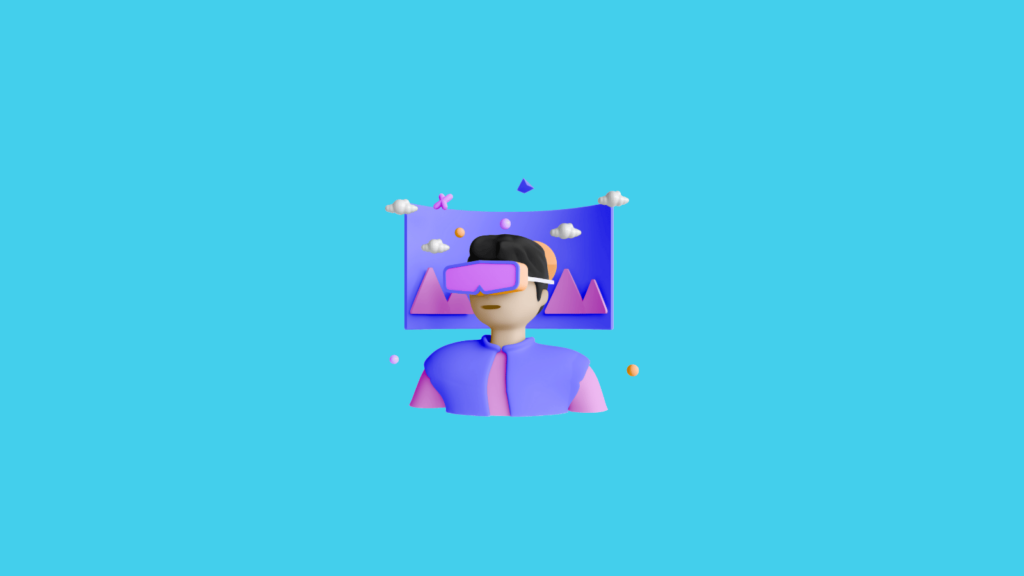Exploring the Metaverse: Implications for Brands and Strategies for Getting Ready for the Future of Digital Engagement
There’s considerable excitement surrounding the metaverse and its implications for future branding. Essentially, it’s a new phase of the internet – interconnected virtual worlds where people can game, interact, and shop using tech like VR and AR. The metaverse economy is already estimated to be worth $15 trillion! So It signifies a significant shift in how brands will engage with customers online. The potential extends far beyond mere product purchases.
For instance, Imagine virtual Nike stores where customers can design custom shoes. Else, Disney amusement parks where you ride rollercoasters with friends in real-time. Wild digital spaces where you and your avatar hang out.
So brands need to start thinking about how their identity and offerings could work in immersive 3D spaces. How do you advertise? Do virtual goods? There’s still so much to figure out. The metaverse will open up new ways for brands to connect with audiences. For companies prepared to embrace it early, there’s an opportunity to become pioneers in a digital frontier teeming with potential.
Chapters
Defining the Metaverse

So what is the metaverse? In simple terms, the metaverse refers to a network of persistent, interconnected 3D virtual worlds focused on social connection. This represents an evolution of the internet from two-dimensional web pages to immersive 3D environments.
Utilizing augmented reality, virtual reality, and sensory-enhancing devices, the metaverse aspires to provide a heightened sense of presence and realism. Some key components of the metaverse include:
- Persistence: The metaverse exists continuously, not dependent on any one person being logged in.
- Interoperability: Experiences across metaverse platforms are transferable and connected.
- Ownership: Users can own digital assets and have agency over their avatar, identity, and data.
- Freedom: Users have autonomy over how they interact and spend their time.
- Embodiment: Users feel immersed via an avatar that represents their digital self.
While still in early development, the metaverse stands to reshape how we work, play, and interact. As these virtual worlds continue to evolve, brands have the opportunity to completely redefine consumer engagement.
Opportunities for Brands in the Metaverse
The metaverse is a big opportunity for brands to connect with people in new, immersive ways. It can change how brands interact with audiences. So brands should think about working with a creative startup branding agency focused on the metaverse. Some ideas for brands in the metaverse:
- Create fun virtual spaces for people to explore your brand like a virtual store or themed world. This makes the brand engaging.
- Hold virtual events and meetups people can attend through avatars. This builds brand community.
- Launch virtual products or NFTs that people can collect and show off. This builds hype and demand for the brand.
- Use gaming partnerships to integrate the brand into popular metaverse platforms. This expands brand exposure to new audiences.
- Build VIP experiences like exclusive virtual concerts or backstage passes. This makes people feel special and valued.
The metaverse lets brands move beyond passive advertising into active experiences. Partnerships with innovative agencies help unlock the potential. There are so many creative ways for brands to deepen connections through immersive metaverse engagement. The future is wide open!
With an estimated global metaverse market valuation of $758 billion by 2026, the potential impact for brands in the metaverse is significant. But succeeding will need adapting to this new digital landscape.
Challenges Brands May Face

The metaverse offers immense potential, but it also presents challenges for brands:
- Safety issues like privacy, bad content, false info, and protecting kids. Brands need to navigate this carefully.
- Building new skills for designing fun virtual experiences. Brands will need metaverse-focused teams.
- Choosing which metaverse platforms make sense for their audience. Brands must find where their customers are.
- Changing workflows for development, marketing, and sales to fit the metaverse. Processes need a re-think.
- Linking real-world and virtual experiences smoothly. Moving between worlds is still tricky.
- Measuring success and ROI of metaverse efforts. New metrics are needed to quantify value.
- Dealing with a fragmented space for now. A fully connected metaverse will take time, so brands must adapt.
These challenges illustrate the importance of maintaining a flexible, experimental mindset. The metaverse is exciting but still new. Brands should take measured steps rather than diving in head first. Since there is no established blueprint, the ability to adapt and evolve approaches will be crucial. While the opportunities are significant, brands must learn to take measured steps before diving headfirst into the metaverse.”
Strategies for Brands Exploring the Metaverse
Start small: Test low-risk ideas on platforms like Roblox first, instead of major investments. Learn what works.
Be flexible: Expect to adapt quickly based on feedback. Be ready to change experiences that miss the mark.
Build expertise: Develop in-house teams skilled specifically in virtual experiences, worlds, products, and tech.
Partner smart: Work with gaming platforms and creative agencies to make engaging brand activations.
Enhance, don’t disrupt: Look for natural brand integrations that improve experiences, not overt ads.
Respect the culture: Understand and fit into the unique culture and vibe of each virtual community.
Measure thoughtfully: Use both traditional and new metrics like time spent, interactions, and sentiment.
The key lies in prioritizing value for users, rather than solely focusing on revenue. With the right strategic approach, brands can tap into the exciting new potential within the metaverse. Start small, stay nimble, and keep the focus on engagement.
Brands Already Exploring the Metaverse
Here are some innovative ways brands are already exploring the metaverse:
- Nike made Nikeland on Roblox, a virtual world with events and limited-edition virtual Nike gear.
- WarnerMedia built a Wonder Woman metaverse on Roblox with different immersive themed areas.
- Vans launched a virtual skatepark on Roblox where avatars can wear Vans shoes.
- Gucci sold virtual items and held an art exhibit in Roblox, earning over $7 million in sales.
- Wendy’s created a metaverse restaurant where people can hang out and watch TV.
- Coca-Cola hosted a virtual Christmas market in VR headsets to spread holiday cheer.
These examples show the potential for brands to creatively build experiences and connections in the metaverse. As technology continues to evolve, there will be even more captivating ways for brands to engage with people. While still early days, forward-thinking companies are exploring how they can start building their place in the metaverse now.
Conclusion
There’s no doubt the metaverse opens up new ways for brands to connect with people through virtual experiences. It’s a total game-changer. But to make the most of it, brands will need vision, a willingness to try new things, and faith that consumers will show them the way.
Companies capable of adapting and innovating in their approaches will lead the way in shaping the next generation of digital engagement. Sure, there are still challenges to work out as the technology evolves. But the possibilities are so exciting! For brands willing to dive in, the opportunities are endless.
The metaverse marks a whole new chapter in how brands can bond with their audiences. And forward-thinking companies have the power to help write the story in this new virtual frontier. This will require a willingness to take risks and a readiness to learn along the way.. But brands bold enough to embrace the metaverse can shape the future of experiences – both virtual and real.
Frequently Asked Questions
What is the metaverse and how does it work?
The metaverse refers to a network of persistent, interconnected 3D virtual worlds focused on social connection. Users can access these virtual worlds through devices like VR headsets, AR glasses, smartphones, and computers. The metaverse aims to offer enhanced social presence, continuity, interoperability, ownership, freedom, and embodiment compared to traditional 2D internet experiences.
How big is the potential market size of the metaverse?
Estimates suggest the metaverse market could reach over $800 billion by 2028. In 2022 alone, over $120 billion in corporate investments flowed into the metaverse, underscoring its growing scale and importance.
What types of brands are already exploring the metaverse?
Early brand activations are underway across sectors like apparel, media, gaming, food & beverage, and consumer goods. Brands like Nike, Gucci, Coca-Cola, Wendy’s, and WarnerMedia have tested experiential and social concepts.
Improve your Marketing with the Power of AI
See how you can start with AI Marketing and reach your goals faster than ever before. Check out the Tips, Strategies, AI Tools, Masterclass, Courses, and Community. Unleash the true potential of your brand with the help of AI.